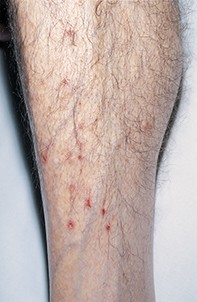Peer Reviewed
Feature Article Dermatology
Skin signs of connective tissue disease
Abstract
The skin can act as a very visible organ for the diagnosis and monitoring of connective tissue disease. A careful examination of the skin and mucous membranes may demonstrate specific or nonspecific signs, which aid in the diagnosis of these disorders and therefore the early institution of appropriate therapy.
Key Points
- A multitude of skin signs may be helpful in making the diagnosis or following the course of a connective tissue disease.
- On the scalp and face, look for alopecia, scaling plaques, telangiectasia, erythema, oedema, nodules, photosensitivity and loss of expression.
- Signs on the trunk include induration, oedema, erythema and photosensitivity.
- Signs on the limbs include nodules, livedo, ulceration and punched-out lesions.
- Signs of connective tissue diseases are notably seen on the hands and feet. Look for nail changes, lesions on the fingertips, nodules, erythema, oedema, hyperkeratotic plaques and shiny skin.
- The severity of skin signs is not necessarily proportional to the extent of visceral involvement: severe disease is sometimes accompanied only by fleeting, subtle or very localised skin disease.
Purchase the PDF version of this article
Already a subscriber? Login here.

